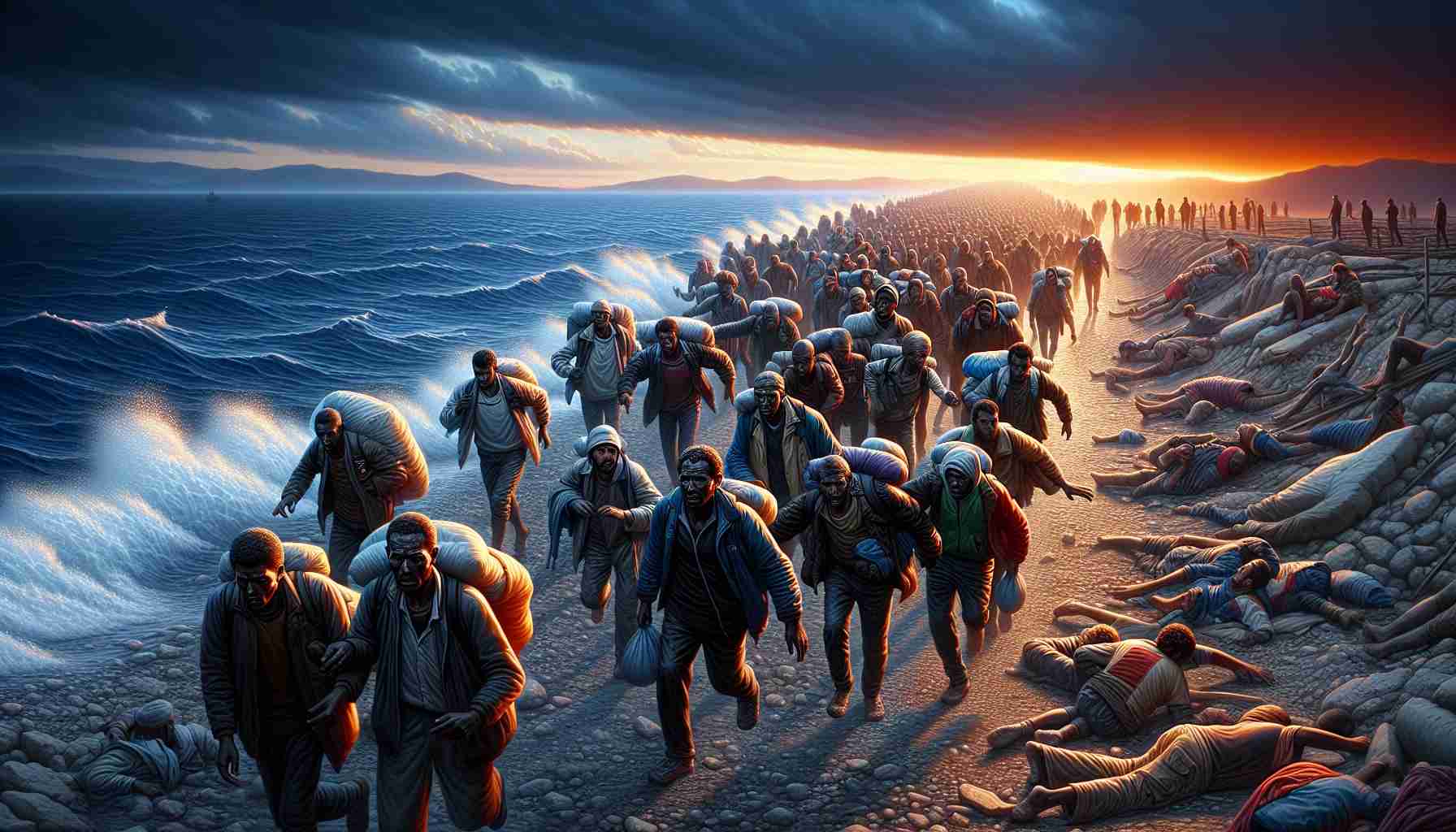In a recent incident, at least 12 individuals lost their lives during a treacherous attempt to cross the English Channel. This tragic event occurred as migrants sought a way to reach the shores of the United Kingdom, emphasizing the perilous nature of their journeys.
Meanwhile, a significant development unfolded in the Balearic Islands, where over 120 migrants successfully landed on the beaches of Ibiza and Formentera. The Civil Guard responded promptly, intercepting 101 migrants in Ibiza and an additional group of 20 in Formentera, all reported to be in good health despite the hardships faced during their journey. These numbers mark the largest single operation by the authorities in the region this year.
Europe is currently witnessing a substantial increase in migrant arrivals, particularly in the Canary Islands. Recent statistics reveal that over 6,200 individuals landed there in a two-month span, with a significant rise noted in August. Conversely, maritime arrival figures for mainland Spain and the Balearics have shown a decline of nearly 16% compared to the previous year.
In contrast to the Mediterranean efforts, the gruesome reality near the English Channel has led to intensified rescue operations, particularly after a vessel faced dire straits, resulting in multiple casualties. As stringent asylum regulations and rising xenophobia continue to push vulnerable populations northward, the ongoing humanitarian crisis remains an urgent concern across Europe.
Tragic Events Highlight Migrant Journey Across Europe: A Broader Perspective
The journeys of migrants across Europe continue to be fraught with peril, underscored by tragic events that have claimed countless lives and highlighted the ongoing humanitarian crisis. Recent incidents in both the English Channel and the Mediterranean Sea reveal the dangers faced by those seeking refuge and a better life. However, the situation extends beyond these tragic events, reflecting deeper challenges within European migration policies and the social dynamics influencing these movements.
What are the primary factors driving migration to Europe?
Migrants are often driven by a combination of factors including war, persecution, poverty, and the impacts of climate change. Many originate from conflict zones such as Syria, Afghanistan, and parts of Africa, where violence and instability have rendered their home countries uninhabitable. Additionally, in recent years, growing economic disparities and environmental degradation have forced more individuals to seek opportunities abroad.
What are the key challenges in managing migrant influx?
One of the main challenges is the inconsistent asylum policies across European countries. The Dublin Regulation, which dictates that refugees must apply for asylum in the first EU country they enter, often leads to overcrowding and strained resources in frontline states like Italy, Greece, and Spain. Furthermore, social tensions can arise as communities grapple with integration, leading to rising xenophobia and anti-immigration sentiments.
What controversies surround European migration policies?
There is considerable debate over the effectiveness and humanity of current migration policies. Some argue that harsher border controls and detainment centers send a clear message against irregular migration but at the cost of human dignity. In contrast, advocates for migrant rights push for more humane approaches that prioritize the safety and rights of individuals. The recent use of pushback tactics by some European countries to deter migrants from entering their borders has sparked significant outrage and raised legal concerns regarding violations of international human rights laws.
What are the advantages and disadvantages of current migrant policies?
The enforcement of strict border controls can reduce the number of arrivals and deter trafficking, potentially saving lives in some instances. However, this approach often leads to increased danger for migrants who may resort to more perilous routes. The adverse economic effects on societies that rely on migrant labor are evident as well; migrants often contribute significantly to their host economies, filling labor shortages in numerous sectors.
What hope exists for improving conditions for migrants in Europe?
Several NGOs and human rights organizations are advocating for reform in the EU’s migration policies, aiming for a more coordinated and compassionate approach. Some member states are beginning to pilot programs aimed at better allocating resources to support migrants and facilitate their integration into society. Additionally, the increasing recognition of migrants as vital contributors to the economy may encourage policy shifts toward more inclusive practices.
In conclusion, as Europe grapples with the complexities of migration, it is essential to address the humanitarian aspects of this multifaceted issue. The tragic events that have occurred are not mere statistics; they represent human lives caught in a web of necessity and desperation. Proactive and compassionate policies are crucial to ensuring that the dignity and rights of all individuals are upheld.
For further information, please visit UN Migrants and International Organization for Migration.










